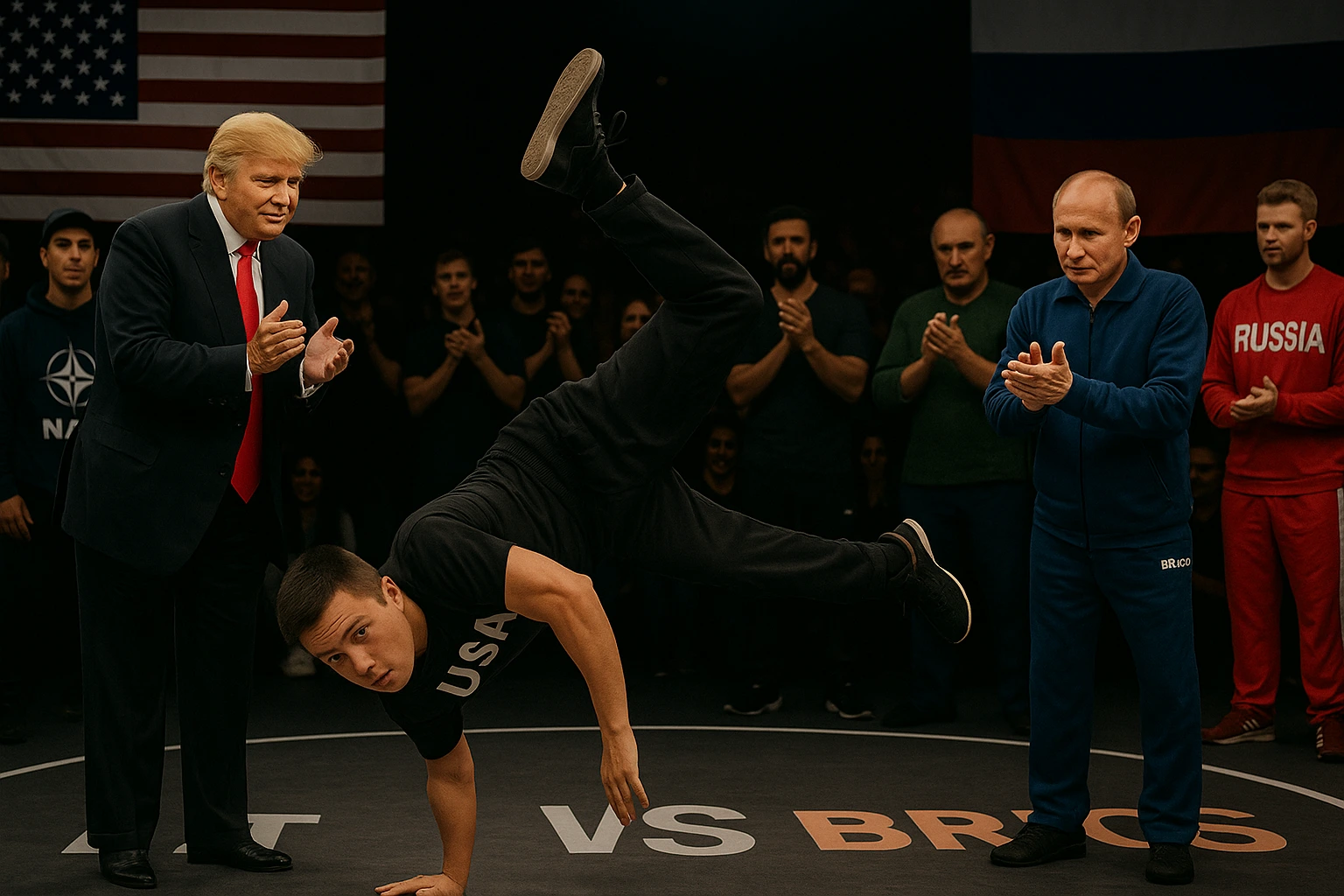In an unprecedented move that has captured international attention, NATO and BRICS nations have decided to settle their mounting tensions through an unexpected arena: a breakdance battle. This spontaneous and unconventional diplomatic showdown signals a shift in how global powers are choosing to display strength and resolve disputes. As political disagreements escalate, leaders and representatives from these two influential blocs are turning to dance as a symbol of unity, competition, and perhaps, mutual respect. This surprising development has sparked curiosity and debate around the world, questioning whether such creative gestures can truly influence international relations.
NATO and BRICS Clash in Unexpected Breakdance Showdown
The breakdance battle between NATO and BRICS has become a symbol of the growing complexity in world diplomacy. Traditionally, conflicts among nations are resolved through diplomatic talks, sanctions, or military posturing, but this time, an energetic dance-off has taken center stage. The event was initiated during a recent global summit, when representatives from both alliances suggested that a dance contest might serve as a neutral and engaging way to tone down tensions. It quickly gained momentum, transforming into an elaborate, high-energy display of moves and style that drew crowds and media attention worldwide. The scene was electric, with each side showcasing their best moves, attempting to outdo one another in a bid for cultural dominance and supremacy.
The choreography of the battle was as much about messaging as it was about skill. NATO delegates performed slick, coordinated routines that reflected discipline, unity, and technological edge, while BRICS representatives countered with vibrant, improvisational routines symbolizing diversity and resilience. Spectators watched as the dance floors, once a battleground of political rhetoric, turned into stages of expression and creativity. Experts noted that this form of competition might serve as a reminder that even serious geopolitical disputes can be approached with humor and artistry, breaking down barriers that traditional diplomacy often erects. The show also highlighted cultural differences and similarities, fostering a unique dialogue beyond words.
Despite the playful nature of the event, underlying tensions remain palpable. Analysts warn that the dance battle, while entertaining, might be a superficial fix that distracts from deeper issues at play. Some critics argue that such displays risk trivializing the serious stakes involved in international security and economic stability. Nonetheless, the spectacle has succeeded in drawing global attention, sparking conversations about new ways to build bridges or at least shift the narrative from confrontation to engagement. As the battle concludes, the world remains watchful, pondering whether this creative approach will yield lasting peace or simply serve as a fleeting moment of levity amid growing uncertainty.
Global Powers Engage in Dance Battle to Resolve Tensions
The decision by NATO and BRICS to engage in a breakdance showdown underscores a broader trend of unconventional diplomacy in today’s interconnected world. With global tensions escalating over trade disputes, military alliances, and geopolitical influence, both sides are seeking innovative ways to communicate without escalating conflict. The dance battle is as much a symbolic gesture as it is a strategic move, aiming to display confidence and control without resorting to violence or aggressive rhetoric. This approach might set a precedent, encouraging other nations to explore creative avenues for conflict resolution, especially when traditional diplomacy hits dead ends.
Furthermore, this dance-off has opened a new chapter in international relations, where cultural exchanges and artistic expression become tools for diplomacy. Such events can foster mutual understanding, reduce hostility, and humanize political adversaries in ways that formal negotiations often cannot. The spectacle also attracts global media coverage, amplifying messages of unity and resilience in a time of division. Political leaders and diplomats now find themselves navigating a landscape where a shared love for dance could serve as a bridge to dialogue, easing tensions that have long simmered beneath surface-level negotiations.
However, critics warn that turning diplomacy into entertainment risks undermining serious dialogue. They argue that while the dance battle captures attention and conveys a message of peace, it might overshadow the substantive issues that need addressing. There is concern that such stunts could be used as distractions or PR moves rather than genuine efforts at resolution. Despite these concerns, the dance-off’s popularity suggests a desire among some nations to approach conflicts with creativity and humor, believing that even the most tense disputes can be approached with a lighter, more human touch. As the world watches, it remains to be seen whether this bold experiment will lead to real breakthroughs or remain merely an entertaining spectacle.
As the world continues to grapple with rising tensions and complex geopolitical challenges, the NATO-BRICS breakdance battle has demonstrated that sometimes, unconventional methods can spark conversations and redefine diplomacy. Whether this dance-off will lead to tangible progress or fade into a memorable cultural moment remains uncertain, but one thing is clear: in an era of uncertainty, creativity and humor might just be the tools needed to keep the spirit of dialogue alive. As nations exchange moves on the dance floor, the global stage watches closely, hopeful that even amidst discord, a shared rhythm might inspire a more harmonious future.








